Review: 2010 MazdaSpeed3
Most cars today avoid doing anything terribly well so as to avoid doing anything terribly badly. Then there are Mazdas. I love my Protege5. The agile chassis is a joy around town, BUT refinement and rust prevention were clearly not on the engineers’ to-do list. I love the RX-8 even more. Outstanding handling, surprising utility for a sports car, BUT the rotary is torque free and can drink a Corvette under the table. And then we have the MazdaSpeed3. You already know what I’m going to say about the MazdaSpeed3. But I’m going to say it anyway.
In addition to how it handles, I also love how my Protege5 looks. Though clearly not a 2010 design, the car’s clean, well-proportioned lines will never grow old for me. It’s not a design that grabs the eye, but it delights when studied. The first-generation Mazda3 that replaced it struck me as
overly trendy. I liked some aspects of its exterior design, but not others, and the whole lacked coherence. When the time came to redesign the Mazda3, Mazda (gotta love the unavoidable redundancy) carried over the basic shape… but turned it up to 11. Every surface from the big smiley grille rearward aims to grab the eye. While initially off-putting, some of the exaggerated surfaces grew on me over the course of a week. Even the grille has to be admired for the sheer audacity it must have taken to put into production. At least it’s not boring or pointless.
The first-generation Mazda3’s interior was a big step up from the Protege5’s in both style and materials. Though generally clean and purposeful, red details and varied textures added just enough visual interest. The 2010 model’s banzai design philosophy continues inside the car. This is more of a problem than the exterior, because you must look at the interior the entire time you’re driving the car.
A hooded display pod arches across the top of the IP behind the instrument cluster. Though this pod usefully locates the displays near the driver’s line of sight, in other ways continually challenged my sense of logic. The entire
left half is blank; the instrument nacelles would obscure anything located there, after all. A compartment for the nav’s memory card occupies the center—they couldn’t locate it somewhere less visible? And the displays for the nav and HVAC/audio are two unequally sized rectangular pegs squeezed into the ride side of the rounded hole. If you’re going to overstyle something, you should at least have someone with some design sense do the dirty deed.
Some materials are good, others are iffy. Upholstered armrests on the doors? Quite good. The red-dotted black fabric and plastic trim specific to the MazdaSpeed3? Iffy.
The interior works better functionally than it does aesthetically. The controls on the center stack are so easy to reach and operate that those for the audio on the steering wheel are truly redundant. Operating the nav exclusively via a cluster of controls on the overpopulated (18 buttons!) steering wheel could have been a usability
nightmare, but isn’t. The nav screen is much smaller than most, but in the end I had little problem with it.
Not that all is perfect on the functionality front. The main instruments are so large that I could not position the wheel where I would have liked to without partly obscuring them. With instruments larger is generally better, but only up to a point. They don’t need to be legible from ten feet away. And why does the speedometer read to 180 MPH?
The swoopy exterior styling forces a distant driving position that’s become common in today’s cars. Locating a deeper instrument panel farther away does enhance an interior’s perceived roominess, but also visually distances the driver from both the car, which consequently feels larger, and the road.
The 2010 MazdaSpeed3’s front seats’ bolsters perform well considering their modest size, but in this instance larger would be better. The lumbar support is non-adjustable, and there is a single height adjustment, so cushion tilt cannot be adjusted independently of seat height. That said, front seat comfort is
pretty good.
Like the rear bench found in the first-generation Mazda3, the 2010’s back seat is tighter than that in the Protege5. Adults will fit back there, but just barely. The MazdaSpeed3 continues to be offered only in hatchback form, so it’s considerably more practical than a conventional sports car.
With a name like MazdaSpeed3 and a big hood scoop (the better to feed the intercooler with?), enthusiasts are going to expect substantial horsepower. They won’t be disappointed. The turbocharged direct-injected 2.3-liter four is good for 263 horsepower at 5,500 rpm and 280 pound-feet of torque at 3,000. Just not always. In the first three gears and especially when the wheel is turned Mazda restricts the engine’s output to reduce the likelihood of throttle-steering the car into a ditch. It’s strong in those gears regardless, once the tach spins past 2,500, and there’s a thick sweet spot from 3,000 to 5,500. Unlike some turbos these days, this one feels boosted. Not because there’s much lag—there isn’t—but because of the rush as boost kicks in. One puzzle I’d like Mazda to
solve: the clutch must be feathered a tad to avoid a momentary stumble right after starting off.
The engine’s sound is dominated by a deep, poppy exhaust that is nice to have when pushing the car hard on an empty road, but is too likely to attract attention otherwise. (No, I wasn’t speeding through the subdivision, it just sounded that way.) In Mazda’s defense, they’ve exercised more restraint with the exhaust than some others, and while always audible, the drone won’t drive you batty on the highway. In other ways, the engine might be too refined for its own good—I prefer a little more intake and valvetrain whir with my exhaust roar.
The shifter’s throws are light and moderate in length, but are a bit notchy and engaging third can be tricky. The oversized brakes feel strong, are easy to modulate, and readily handle any off-track challenges. Fuel economy ranges from mid-teens to mid-twenties, depending quite heavily on how the car is driven. Figure low twenties with a moderate right foot in suburban driving.
Handling has traditionally been a Mazda strength, and the MazdaSpeed3 easily lives up to the brand’s reputation. The electro-hydraulic (not fully electronic) steering provides good feedback through the small, thinly padded wheel. Though not as agile as the Protege5, the MazaSpeed3 has a delicate, lively feel and can be precisely placed in turns. Accelerate through the curve and the car hunkers down, only beginning to lapse into understeer as its high limits are approached. Lift off the throttle and the car quickly rotates into oversteer. While the loose tail end is easy to catch, and can be put to good use at times, a steady foot through turns is generally best. The stability control is effective, unobtrusive, and knows its proper place—you must be driving the car quite fast and hard—or quite stupidly—to trigger it on dry pavement. It’s much easier to trigger the traction control.
The biggest surprise with the MazdaSpeed3: a thoroughly livable ride. Some premium sedans with performance pretensions ride considerably worse than the Speed3. The Mazda’s spring rates are moderate, with good body control achieved through well-tuned damping. Some drivers will mind the slight amount of float and roll in the hardest driving, and will no doubt mod the suspension accordingly. For most enthusiasts though, the ride-handling compromise is nearly ideal.
But all is not perfect with the MS3, and I’ve saved the worst for last. Putting a
torquey engine in a conventionally-suspended, front-wheel-drive compact is a recipe for torque steer. While Mazda has selectively reduced engine output to reduce torque steer, this does not eliminate it. I’ve experienced worse, even much worse. But I’ve also experienced none at all, and none at all is much better than some. One mitigating factor: getting on the gas while turning has the effect of steering the car deeper into the turn rather than towards the curb. The torque-sensing limited-slip differential might deserve credit.
Like the Protege5 and RX-8, the MazdaSpeed3 possesses a healthy number of strengths and weaknesses. It’s fairly practical, totally livable, and very fun to drive. But the styling is questionable and the torque steer regrettable. All-wheel-drive is the road not taken. But the Subaru WRX and Mitsubishi Lancer Ralliart with all-wheel-drive are more expensive and less fun. The Mitsubishi Evo is as fun, and then some, but it’s far more expensive, less economical, and not as practical. Among front-wheel-drive competitors, the Volkswagen GTI is more tastefully styled and furnished, but doesn’t accelerate or handle as well. So, while the MazdaSpeed3 is clearly not a perfect car, for an enthusiast with a family and modest budget it could well be the best available car. Just look past the silly grin and keep a firm hand on the wheel—there’s serious fun to be had here.
Mazda provided the vehicle, insurance and one tank of gas for this review
Michael Karesh owns and operates TrueDelta, an online source of automotive pricing and reliability data
Michael Karesh lives in West Bloomfield, Michigan, with his wife and three children. In 2003 he received a Ph.D. from the University of Chicago. While in Chicago he worked at the National Opinion Research Center, a leader in the field of survey research. For his doctoral thesis, he spent a year-and-a-half inside an automaker studying how and how well it understood consumers when developing new products. While pursuing the degree he taught consumer behavior and product development at Oakland University. Since 1999, he has contributed auto reviews to Epinions, where he is currently one of two people in charge of the autos section. Since earning the degree he has continued to care for his children (school, gymnastics, tae-kwan-do...) and write reviews for Epinions and, more recently, The Truth About Cars while developing TrueDelta, a vehicle reliability and price comparison site.
More by Michael Karesh
Latest Car Reviews
Read moreLatest Product Reviews
Read moreRecent Comments
- ToolGuy TG likes price reductions.
- ToolGuy I could go for a Mustang with a Subaru powertrain. (Maybe some additional ground clearance.)
- ToolGuy Does Tim Healey care about TTAC? 😉
- ToolGuy I am slashing my food budget by 1%.
- ToolGuy TG grows skeptical about his government protecting him from bad decisions.




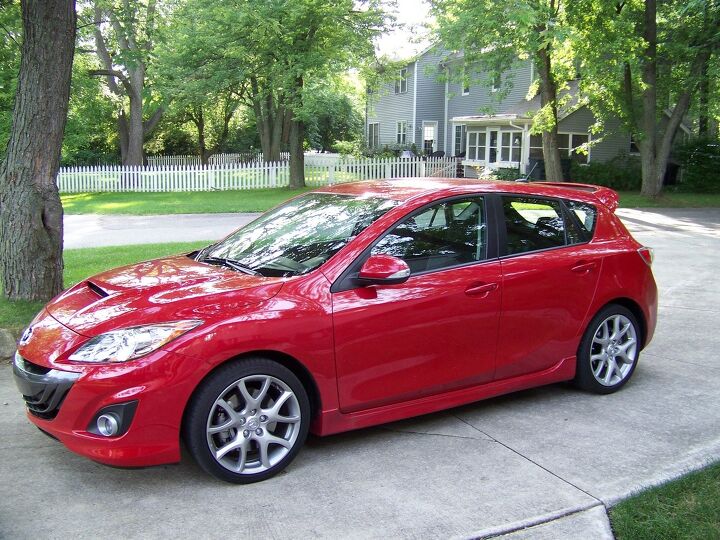























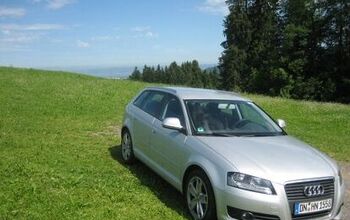
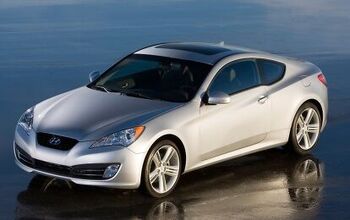
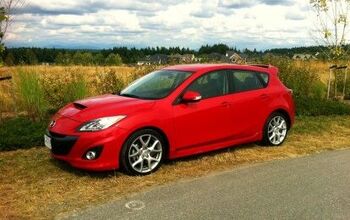
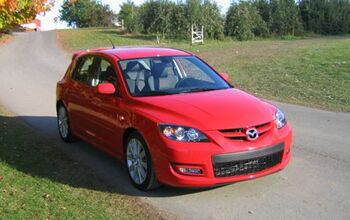










Comments
Join the conversation
This article could not have been more timely for me (I haven't been on the site in the past week so just getting caught up). Looks like I blew the motor (not sure until we tear down but probably threw a rod) in my Contour SVT on Friday at the track, so when I got towed and dropped off the car, there was a brand new MS3 sitting right outside for a test drive. Figured might as well take a spin while waiting on my ride. I had almost all the exact same impressions from a 15 minute test drive that Michael had in a week - odd clutch pickup, great engine (really notice the boost), good brakes, and excellent ride and handling (although didn't really test out the handling). However, there are enough shortcuts to make me think twice - that weird, weird dash display, the strange seating position, the cloth/leatherette mix. A new car isn't really in the mix for me at this moment anyways. More likely to drop a 3L in the SVT and keep it going. I know Sajeev would approve.
Had my 2010 MS3 for 6 months now. - great, fun little car with a ton of power for the displacement - smooth power delivery, does not seem to have much turbo lag if any, and doesn't suddenly kick you in the back above a sudden RPM range, powerful brakes! - love the LED tails, AFS HID lights, tech toys such as push button start, bluetooth audio/calling, 6 CD Bose (the bass sucks though), auto headlights/wipers, frigid AC with climate control and dual-zone temps, etc. - incredibly practical and spacious for the size, I can fit my mountain bike in the hatch area (with seats folded down) and close the door completely without having to use bungee cords. - same or better fuel economy compared to my old 2.3L Mazda 3, and the 2.5L Mazda 3 (observed over 6 months of use, no change in driving habits except to partake in boost). - astoundingly nice interior for the price and segment, though I wish they didn't use the disco-themed seats (the first gen MS3's seats were MUCH nicer). The polka-dot patterned plastic trim on the dash can be ignored and actually doesn't cause glare like the silver trim does. Cloth inserts for the doors are actually really nice, I like them. - exterior styling is very modern and will not look dated even 4 - 5 years from now, even the smiley face can be seen as an asset here. Cons: - smiley face can jump out at you sometimes, even on a black car... not a big problem, planning to paint the bumper insert black to match the bumper, and black out the Mazda logo so it looks less like a button nose. - FWD has its limitations, it is this car's biggest limitation and biggest asset (cost/efficiency-wise) - torque steer is there at WOT, but presents itself as a slight tugging when you have both hands on the wheel. Add good aftermarket motor mounts and torque steer will almost go away. - stock fuel pump is not strong enough to handle anything beyond an intake, it needs upgrading if more intake/exhaust/cooling mods are added (an AP is also needed). Mazda has carefully positioned this car right where they wanted it to be. Adding AWD would have upped the price and make it directly compete with the STI and Evo, so instead of doing that, they focused more on everything else at the expense of AWD. It's skewed more towards the DD side than the track side, although the only real thing it's missing is AWD - everything else appears to be there. With some mods (intake, motor mounts, AP, FMIC/TMIC, exhaust) you can have a very capable track car that knows how to settle down outside of the track in real life. As far as AWD and winter...I have driven mine through a Canadian winter with Hankook iPike w409s and I have no issues at all going anywhere, up a hill, down a hill, out of thick snow, slush, etc. Winter driving is more about the tires and driving style than whether power goes to two wheels or four.